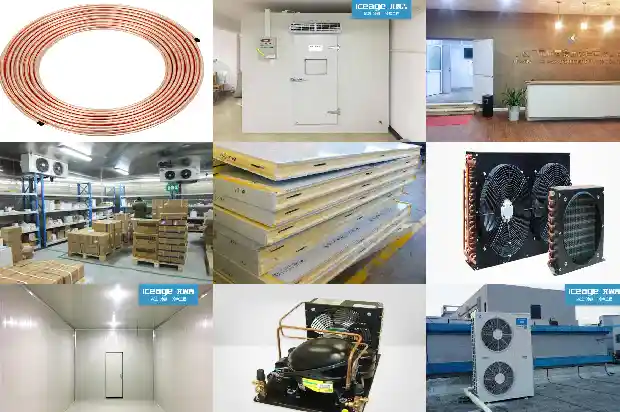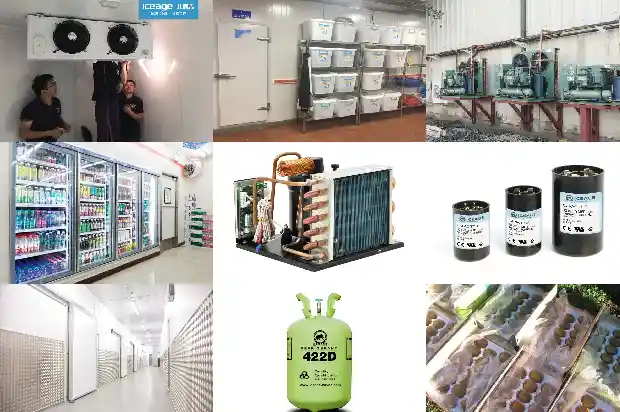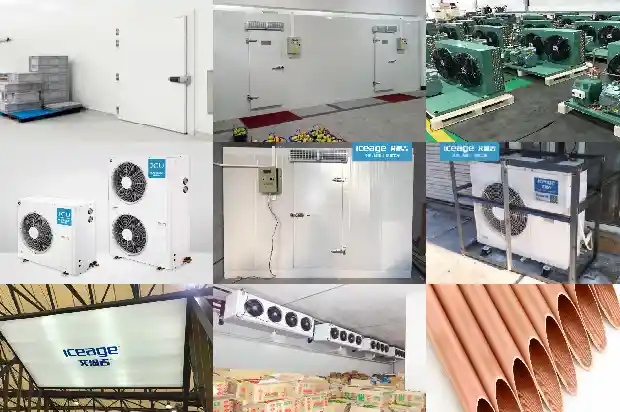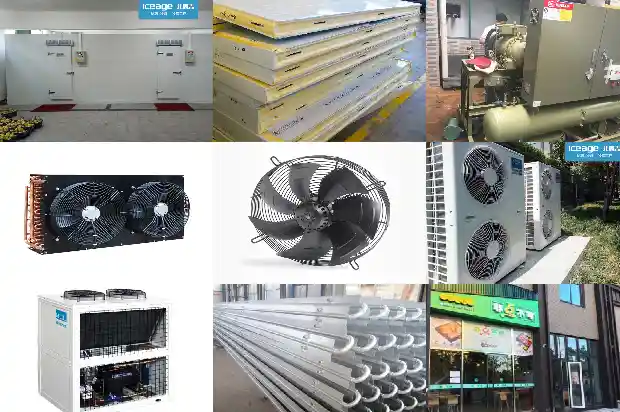Valves in the Refrigeration System
2025-03-03
In the refrigeration system, according to the requirements of the refrigeration process and usage, various valves need to be assembled on the refrigeration pipeline, such as expansion valves, solenoid valves, ball valves, angle valves, stop valves, safety valves, etc., which are used to control the flow of the medium in the system, control the pressure, or facilitate the maintenance of the equipment. The following is a brief introduction to some common valves.
- The head stop valves of the compressor: They refer to the suction valve and the exhaust valve of the compressor. They are used for cutting off, regulating or throttling. Before installation, check the valve plate, valve seat, bolts and other parts. There should be no defects such as burrs, scratches, cracks, warping, etc. The suction and exhaust valves shall not be installed reversely.
- Safety valve: Its function is to prevent the high-pressure in the refrigeration system from exceeding the limit value, thus causing the bursting accidents of pipelines and equipment. When the high pressure is too high, the safety valve will automatically release the refrigerant into the low-pressure system or the atmosphere. For some condensers with relatively small capacity, a fusible plug is sometimes used instead of the safety valve.
- Check valve: Also known as a one-way valve. Its function is to limit the one-way flow of the refrigerant. When the refrigerant flow is interrupted or reversed, the valve closes. It is generally installed in the pipeline between the compressor and the condenser to prevent the refrigerant in the condenser or the liquid receiver from flowing back. Sometimes it is also installed in the suction pipeline of the compressor. For example, when there are multiple cold storage rooms served by one compressor, it can prevent the return gas of the high-temperature cold storage room from flowing back to the low-temperature cold storage room or prevent the refrigerant from condensing in the suction pipeline after the compressor stops. There is an arrow indicating the flow direction marked on the valve body of the check valve.
When installing, pay attention that the direction of the arrow should be consistent with the flow direction.
- Ball valve: It has an action of rotating 90 degrees. In the pipeline, it is mainly used for cutting off, distributing and changing the flow direction of the medium, and is used as a switch or a cut-off valve. For example, installing independent ball valves on the return gas pipeline and the liquid supply pipeline respectively can facilitate debugging and maintenance.
- Solenoid valve: It is an electromechanical on/off valve, also known as an electrically opened and closed stop valve. It is usually used to shut off or open the pipelines of liquid and gaseous refrigerants and has two states: normally open and normally closed. It is mostly installed on the liquid pipeline before the expansion valve to cut off or open the liquid supply to the expansion valve. The solenoid valve shall not be installed upside down to ensure that the core iron can move up and down easily. When installing, confirm the direction of the arrow marked on the valve body and do not install it wrongly.
- Angle valve: That is, the angle stop valve, whose structure and characteristics are modified from the globe valve.
The difference between it and the ball valve is that the outlet of the angle valve forms a 90-degree right angle with the inlet. It is also called a triangle valve or an angular valve.
- Expansion valve: The expansion valve is also called a throttle valve. In some refrigeration systems, the expansion valve is used as a throttling element. When the refrigerant liquid at high pressure and normal temperature is sent into the evaporator, it reduces the pressure of the refrigerant liquid, thus reducing the temperature of the refrigerant liquid. It is also a pressure reducing device. The expansion valve must be installed in the liquid pipeline before the evaporator; the thermal bulb should be fixed on the suction pipeline as close to the evaporator as possible. The installation position of the thermal bulb on the suction pipeline: When the thermal bulb is installed on the horizontal suction pipeline, from the direction of the cross-section of the pipeline, it should be in the position between about 12 o'clock and 4 o'clock as if looking at a clock.
- Evaporating pressure regulating valve, condensing pressure regulating valve: The function of the evaporating pressure regulating valve is to maintain a constant evaporating pressure, and it is also called a back pressure valve. For example, in a Freon system with multiple storage rooms, one compressor needs to supply cooling to several cold storage rooms with different temperature requirements at the same time. In order to enable the high-temperature cold storage room to obtain a higher evaporating pressure, an evaporating pressure regulating valve is installed in the return gas pipeline of the high-temperature cold storage room, that is, between the evaporator and the compressor.
At the same time, a check valve is installed in the return gas pipeline of the low-temperature cold storage room, which is beneficial for the compressor to operate under a relatively stable suction pressure. In order to achieve the stability of the condensing pressure, some refrigeration systems are equipped with a condensing pressure regulating valve. For an air-cooled condenser, it is used to regulate the cooling air volume. For a water-cooled condenser, it is actually a water volume regulating valve, which is used to regulate the cooling water volume.
The installation position and height of the valves should meet the design requirements. The valve heads of the solenoid valve, regulating valve and lift check valve should all be vertically installed upwards on the horizontal pipeline. The safety valve should be checked by the quality and technical supervision department before installation and can be used only after passing the inspection. The safety valve should be installed vertically. For the valves used to control the flow of the medium, pay attention to the flow direction of the medium during installation. For the valves marked with an arrow indicating the flow direction of the medium, the installation of the valve should make the direction of the arrow consistent with the flow direction of the medium.
For the valves without an arrow mark, they are generally installed according to the principle of "inlet at the lower part and outlet at the higher part". When the valve is connected to the pipeline by flange or thread, the valve should be installed in the closed state. When the valve is connected to the pipeline by welding, the valve shall not be closed, and the heat-intolerant material components such as the valve cover, valve core and sealing ring should be removed before welding to prevent damage to the sealing surface due to heat. Before reassembling the valve after welding is completed, clean the inside of the valve to prevent sundries or welding slag from being brought into the system.
Related Articles
- Principles and Applications of Common Pressure Control and Pressure Regulating Valves
- Why Should Refrigeration Shut - off Valves Have "Low - Inlet and High - Outlet" Design?
- Common Pressure Valves and Protection Devices in Refrigeration Units
- Introduction to Control Valves in Refrigeration Systems
- Selection of Bypass Control Valves for Air - conditioning Water Systems
- New Technology: A New Control Method for Throttle Valves in Refrigeration Systems
- Selection and Installation of Thermal Expansion Valves
- What Causes Noise in Pressure Reducing Valves?
- Precautions for Inspecting Valves in Refrigeration Systems
- HVAC - Solving the 5 Common Problems in the Refrigeration System
- Eliminate the "Blockage" Faults (Ice Blockage, Dirt Blockage, Oil Blockage) of the Refrigeration System in 5 Minutes
- Brief Analysis of Commonly Used Automatic Control Devices in the Refrigeration System
- Forms and Structures of Oil Separators in the Refrigeration System
- Five Common Problems in the Refrigeration System~~ Solve Them One by One!
- Pipelines Used in the Refrigeration System
- Does a lower evaporation temperature result in a larger refrigeration capacity, or does a higher evaporation temperature lead to a larger refrigeration capacity?
- Energy - saving Control and Adjustment of Main Operating Parameters of the Refrigeration System
- HVAC - Concise Explanation of Refrigeration Principles
